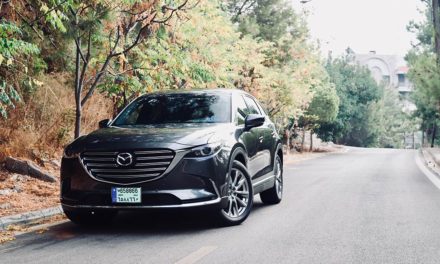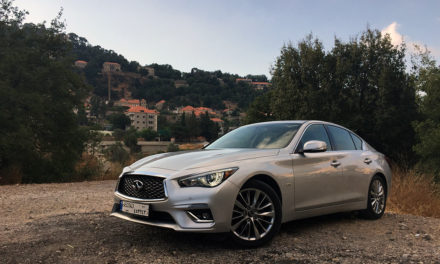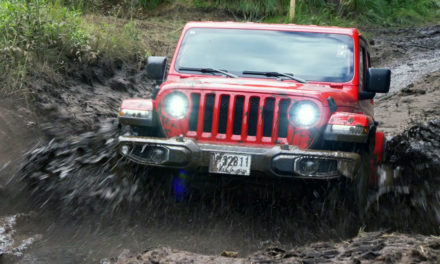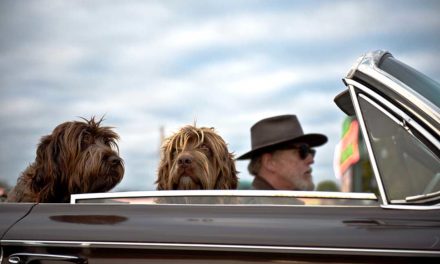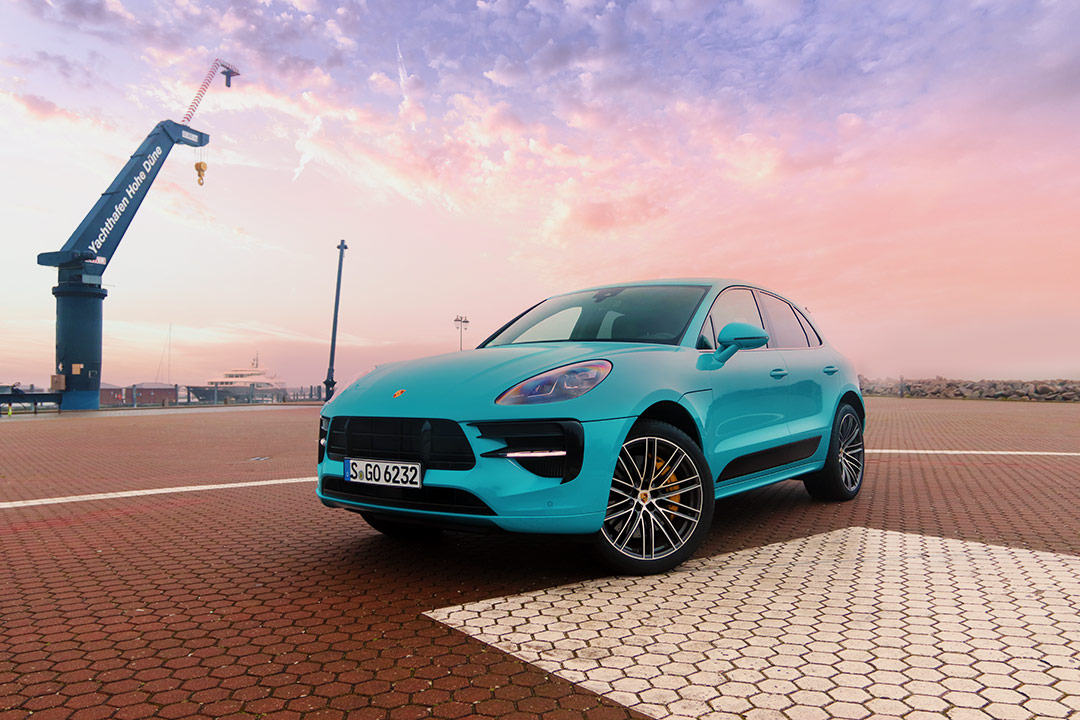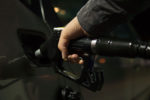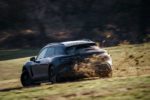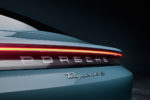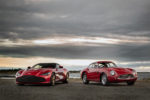Eyes On
Target
If I’ve learned anything over the years, it’s that the history of the automotive industry is replete with examples of carmakers devising faulty strategies based on false assumptions, embracing new directions without looking at the reality on the ground, or hooking prospective buyers with concepts whose production is neither realistic nor within their capabilities. This is a reflection of the decision-makers in these companies who as individuals often indulge in self-delusion and a narrow view of the whole picture.
On the other hand, there are men like Hiroshi Inoue, of a breed who don’t suffer ill-informed, pointless or fanciful pursuits. Visiting Beirut to join A.N. Boukather as Lebanon’s exclusive distributor of Mazda vehicles celebrated 50 years of partnership with the Japanese carmaker, the managing executive officer at Mazda Motor Corporation sat down with FastMates for a brief discussion on the brand’s business philosophy and views on trending topics in the industry.
In regards to the ever-prevailing topic of electric vehicles (EVs), Inoue wasted no time in pointing out the glaring misconception on what many deem to be the solution to reining in CO2 emissions.
“From my view there are some people who misunderstand the battery EV as a zero-emission vehicle,” Inoue explained. “What Mazda is pursuing is to reduce the emissions ‘well to wheel.’”
“We worry about the opposite movement, that we might accelerate global warming”
That term “well to wheel” is key in this industry, and rarely clarified. The Mazda executive, however, emphasized its importance. “When we look at the EV vehicle, we know that it doesn’t produce emissions,” Inoue said. “However, in order to charge the EV’s battery, we burn fossil fuels.” Or simply put, EVs play a role in exacerbating pollution even before they take to the road. That casts an entirely different light on the so-called green concept.
But as Inoue pointed out, that certainly doesn’t mean they can’t play a role in a greener society. “Of course, there are some countries where almost 100 percent of electricity is generated [from renewable] sources, or nuclear plants. These don’t produce any CO2 and in such countries we are pleased to offer the battery EV,” he explained. “However, in other countries where fossil fuel is burned to generate electricity, we worry about the opposite movement, that we might accelerate global warming.”
“Take the Mazda3. Based on our analysis, if over 80 percent of the national electricity is generated by burning fossil fuel, the CO2 from today’s combustion engine Mazda3, from a well-to-wheel perspective, is better. Therefore, our strategy is that we continue to evolve today’s SKYACTIV combustion engine, pursuing higher efficiency,” he said.
Mazda’s approach to utilizing electricity is to take advantage of energy produced from operations such as braking and deceleration, Inoue explained. “It is clear that electricity has an advantage, especially for the real energy generation during the car’s deceleration, so you can imagine the kinematic energy that is converted to [heat] by the traditional brake and dispersed to the air. Once we generate energy during vehicle deceleration and use it to charge the vehicle, that’s a very efficient way. Therefore, Mazda is targeting to standardize this kind of electrification on 100 percent of Mazda products by 2030,” he added.
But he doesn’t rule out EV Mazda vehicles altogether, and even notes that the carmaker has EVs in the pipeline, and plans to add at least one model to the Mazda range, even if out of necessity. “Yes, we are planning. As you know from a global perspective, some of the countries such as China and the United States set up new regulatory requirements to force manufacturers to sell a certain amount of battery-powered EVs. Therefore, we will add a brand-new model which is equipped with the battery requirement, as well as the rotary engine range extender.”
As a range-extender, Mazda’s small, lightweight and exceptionally quiet rotary engine will recharge the battery when needed to increase the vehicle’s driving range, eliminating the range anxiety that still troubles a high percentage of battery EV users.
Inoue also underscored the brand’s determination to maintain their momentum, refusing to grow complacent and constantly seeking to improve their products. And the man who plays a pivotal role in the workings of one of the world’s leading corporations was not content to sit on Mazda’s laurels.
“From the perspective of my colleagues and me, today’s product is not perfect,” he insisted. “Of course, we are proud to say that the “Jinba-ittai” driving pleasure is a very unique, outstanding [philosophy] compared to the other manufacturers. But we are not satisfied yet. For example, on all the sixth-generation models which you can see on the roads today, we focused on delivering the higher driving pleasure, or “Jinba-ittai,” the one that’s between the car and the driver, but actually we focused on the driver’s pleasure. However, for the coming seventh generation led by the new Mazda3, we are now focusing to deliver driving pleasure not only for the driver but also for all the passengers.”
The new focus is the “Kai” approach to vehicle design, whereby, the entire car is crafted as an organic whole, from the seats to the vehicle body, to the chassis and the tires, in order to fit seamlessly with the way people moved naturally.
The Mazda3 Inoue was referring to is the 2019 Mazda3 revealed at the Los Angeles Auto Show a week ago. The compact is based on the brand-new “Kai” Concept, or “vanguard,“ which made its global debut at the Tokyo Motor Show, and is a combination of breakthrough Mazda technologies, Japanese aesthetics and the stunning Kodo design that epitomizes the ideal vehicle powered by an internal combustion engine, while stripping away all excess elements from the car’s styling.
“Our next focus is to give peace of mind not only to the driver but also the passengers by the “biku” dynamics, in addition to “Jinba-ittai,” which will be applied on the coming generation of new products,” Inoue explained.
That also brings up the matter of delivering on promises. We are often mesmerized by concept vehicles that rarely transition to production, and most of those that do make it are a pale reflection of the cars that steal our hearts at car shows. But with Mazda, both the Kodo and Kai concepts have not only made it to the assembly lines, but the production models are almost 100 percent true to the teased concept.
Inoue also had much praise for its distributor in Lebanon. “I spent 30 years as an engineer at Mazda, and around five years ago I assumed my current assignment, to take care of the distributors globally. There is no doubt that AnB are one of Mazda’s best distributors, focusing on delivering excellent customer care in order to deliver the best customer satisfaction, but also the entire ownership experience,” he said.
Lebanon’s unique character was also not lost on Inoue during his brief time in the country. “Before arriving here, I imagined it to be like the Arab world, such as Saudi Arabia. But after arriving I found it’s a unique setup, a place in between the European culture and the Arabic culture. And in the middle, I get a strong feeling of Europe.”
The man knows his stuff, and now so do we. Arigatou gozaimasu, Inoue-san.

